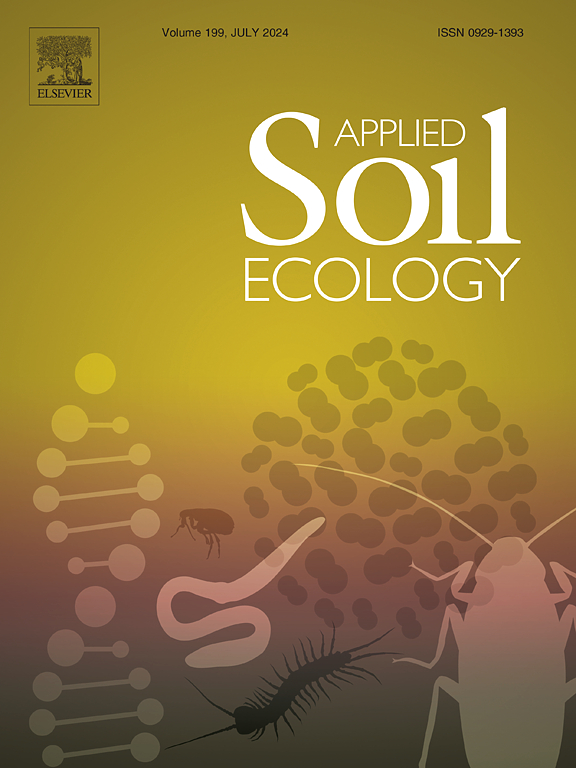Toxicological effects of per- and polyfluoroalkyl substances (PFASs) on earthworms: Progress and prospects
IF 4.8
2区 农林科学
Q1 SOIL SCIENCE
引用次数: 0
Abstract
As a class of emerging persistent organic pollutants (POPs), per- and polyfluoroalkyl substances (PFASs) are widely detected in the soil environment, posing a significant threat to the soil ecosystem and human health. Therefore, it is necessary to study the ecotoxicological effects of PFASs in soil. In this study, we conducted a comprehensive review of the toxic effects of PFASs on earthworms at the individual and sub-individual levels, including survival status, body weight, reproduction, oxidative damage, genes, metabolism, and so on. Results showed that earthworms exposed to certain concentrations of PFASs display various pathological symptoms on their body surfaces, a decrease in body weight and reproductive rate, and even death. The LC50 values of PFOS to earthworms (365–1404 mg/kg) are consistently lower than those of PFOA (544–1307 mg/kg) under the same exposure condition, indicating a higher toxicity of PFOS compared to PFOA. At the sub-individual level, PFASs may induce oxidative stress, DNA damage, aberrant gene expression, and metabolic disruption in earthworms. PFOS induced disruption of the nervous and metabolic system, PFHxS disrupted energy balance and elicited inflammation, and PFBS induced cell apoptosis in earthworms. Compared to PFOS, PFHxS may induce a greater degree of oxidative stress and damage, and 6:2 Cl-PFESA (F![]() 53B) exhibited a greater propensity to disrupt the extracellular matrix and induce cellular ferroptosis and apoptosis in earthworms. At environmentally relevant concentration levels, PFOA induces significant dysregulation of pathways related to amino acid, energy, and sulfur metabolisms within earthworms. Bioavailability and bioaccumulation capacity of PFASs are important factors in determining their toxicological effects in soil, which is influenced by the molecular structure of PFASs and the combined effects of various environmental factors, such as soil organic matter composition and content, pH, PFAS concentrations and exposure duration. Finally, existing research deficiencies and future directions about the toxicological research of PFASs on earthworms are proposed, aiming to offer reference for ecological risk assessment of PFASs-contaminated soil.
53B) exhibited a greater propensity to disrupt the extracellular matrix and induce cellular ferroptosis and apoptosis in earthworms. At environmentally relevant concentration levels, PFOA induces significant dysregulation of pathways related to amino acid, energy, and sulfur metabolisms within earthworms. Bioavailability and bioaccumulation capacity of PFASs are important factors in determining their toxicological effects in soil, which is influenced by the molecular structure of PFASs and the combined effects of various environmental factors, such as soil organic matter composition and content, pH, PFAS concentrations and exposure duration. Finally, existing research deficiencies and future directions about the toxicological research of PFASs on earthworms are proposed, aiming to offer reference for ecological risk assessment of PFASs-contaminated soil.

求助全文
约1分钟内获得全文
求助全文
来源期刊

Applied Soil Ecology
农林科学-土壤科学
CiteScore
9.70
自引率
4.20%
发文量
363
审稿时长
5.3 months
期刊介绍:
Applied Soil Ecology addresses the role of soil organisms and their interactions in relation to: sustainability and productivity, nutrient cycling and other soil processes, the maintenance of soil functions, the impact of human activities on soil ecosystems and bio(techno)logical control of soil-inhabiting pests, diseases and weeds.
 求助内容:
求助内容: 应助结果提醒方式:
应助结果提醒方式:


